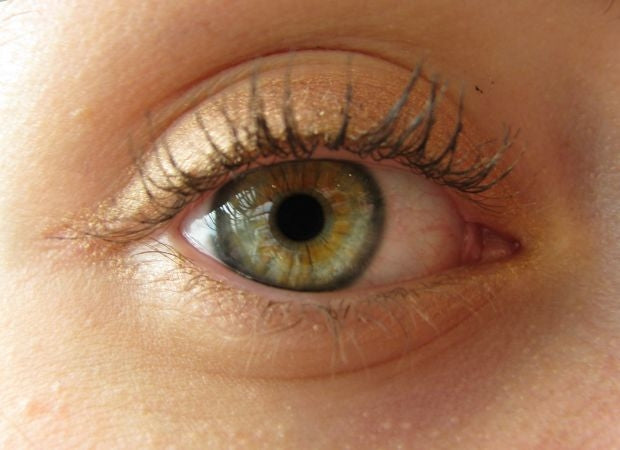We rarely hear about dry eye syndrome, because it's not a serious condition! Dry eyes may seem trivial, but they're actually very annoying. The symptoms of this condition can make you miserable:
- Tingling;
- Mild burning;
- Irritation;
- Variable blurred vision;
- Eye fatigue;
- Mucus around the eyes;
- Difficulty wearing contact lenses;
- Sensitivity to light, wind, cold, smoke, etc.(1)
What's more, a poorly hydrated eye suffers from inflammation and is more prone to infection and corneal irritation.
Where does dry eye syndrome come from?
The lacrimal glands normally secrete a good quantity of tears to keep the surface of the eye moist, protect it from the environment and remove dust. The fatty acid and mucus content of tears is very important in keeping the eye hydrated. Dry eye syndrome occurs when tear production is reduced, or when a change in tear density (reduction in fatty acids and mucus) causes tears to evaporate more quickly. This is when inflammation sets in(2).
There are several causes of dry eye syndrome, but in some cases, no specific cause can be identified. The main causes are:
- Aging
- Overly dry environments, such as certain offices
- Hormonal changes
- Wearing contact lenses
- Blepharitis (inflammation of the eyelids)
- LASIK-type laser treatments
- Certain autoimmune diseases
- Alcohol
- Pollution
- Computers (prolonged use)
- Antidepressants and other drugs with anticholinergic side-effects, such as antihistamines
- Vitamin A deficiency (rare in developed countries)
Dry eye syndrome is quite common. According to various authors, it affects between 4% (3) and 33% (4) of the population, depending on region and definition. The average is around 10 to 15%.(5) What's more, the prevalence of this syndrome is on the rise, an increase directly linked to computer use. It is even referred to as Computer Vision Syndrome(6), which affects 64% to 90% of users, and has the following symptoms:
- Eye fatigue
- headaches
- Eye discomfort
- Dry eyes
- Diplopia (double vision)
- Blurred near or far vision
What to do?
Eye hygiene
It's important to maintain good eye and vision hygiene. For example, when you're working at a computer, you need to take breaks to look into the distance. This can be very difficult for people working in cubicles. So you have to be creative. Letting your gaze go to infinity allows the eye muscles to relax and avoid spasms.
Make sure the air quality in your working environment is adequate. Dryness and indoor pollution are enemies of the eyes.
Good full-spectrum lighting, neither too bright nor too dim, also reduces eye fatigue.
How about a supplement?
To alleviate symptoms, of course, there are artificial tears. But did you know that there is now research pointing to a simple, natural solution?
Using blood tests, researchers have discovered that an imbalance between omega-6 and omega-3 intakes proportionally increases the risk of developing dry eye syndrome. The higher the omega-3 intake, the lower the risk(7).
Your best allies against dry eyes are therefore omega-3s. They reduce the inflammation that is always present, whatever the specific cause, in dry eye syndrome. Taking omega-3s, mainly DHA, also improves tear quality(8,9). Both omega-3s also increase (or rather normalize) tear quantity and improve secretion from the meibomian glands, the small sebaceous glands around the eye(10,11).
Recommended doses are usually quite high, around 1800mg of omega-3 (EPA and DHA) per day.
Good relief!
Source: http://www.jydionne.com/


